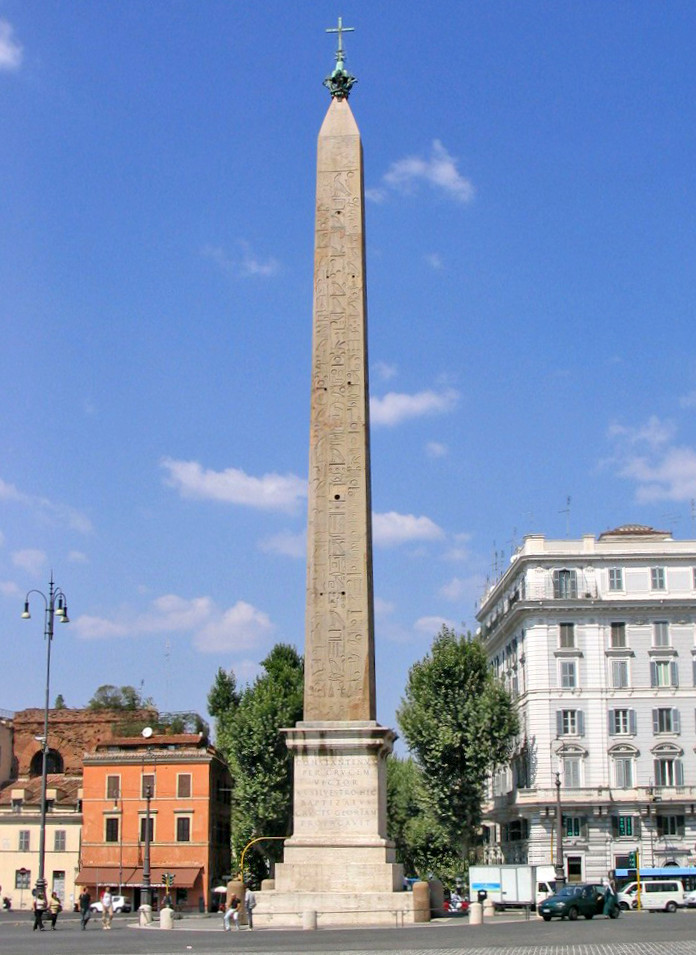The third son of Constantine I, Flavius Julius Constantius II was born in Illyricum on 7 August 317. Constantius II reigned as Augustus in the East from 337 to 353 and over the whole of the Roman Empire from 353 until his death in 361.
On the cusp between the fall of the empire and the rise of Byzantium, Constantius moved to increase the status of the recently-founded Constantinople: He rasied its city council to be equal in power to that the Roman Senate (340), and instituted quaestors, or tribunes of the people, and praetors based on the Roman model. In 342 he put the city under the authority of a proconsul, and finally in 359 under a prefect of the city as at Rome.
In 357 Constantius visited Rome himself, erecting an obelisk transported from Thebes in Egypt, intending it to decorate the Circus Maximus. Found in three pieces in 1587, it was restored by Pope Sixtus V, and reinstalled near the Lateran Palace and basilica of San Giovanni in Laterano in 1588.
Media of commerce from the reign of Constantius is of particular interest to numismatists as the coinage and objects of exchange made of silver and gold often convey the cultural tensions at the end of one empire and beginning of another. The gold coin known as a solidus (or nomisma in Greek) often was inscribed in both Greek and Latin and decorated with the image of the emperor as well as the Chi Ro and symbols of Roman deities and pagan cult gods and goddesses. These coins, often inscribed with propagandistic phrase Fel Temp Reparatio – “Happy times are here again” – have been found in archaeological excavations as far-flung as modern-day Mongolia, Norway, and Sudan.
Reference: Raymond Davis. “Constantius II.” The Encyclopedia of Ancient History. Hoboken, N.J.: John Wiley & Sons, 2012.
Lateranense Obelisk, originally from the Temple of Amun in Karnak, brought to Rome in 357. Photo from Wikimedia Commons.
Portrait of Constantius II from the Chronography of 354, The Barberini MS, Vatican Library.
Belt with medallions of Constantius II and Faustina minted in Nicomedia, c. 361. The Walters Art Museum, Baltimore, Maryland.
Coin struck in Antioch commemorating the tenth anniversary of the reign of Constantius II, 347. Photo from Wikimedia Commons.
Silver bowl with gold and stone inlay showing Constantius II in procession, c. 340. University of Heidelberg Department of Byzantine Archaeology and Art History, Germany.
Further Reading:
Peter Crawford. Constantius II: Usurpers, Eunuchs and the antichrist. London: Pen and Sword, 2016.
Philip Grierson. “Byzantine Coinage.” The Dumbarton Oaks Research Library and Collection, Washington, D.C., 1999.
Adrian Murdoch. The Last Pagan: Julian the Apostate and the End of the Roman World. (Rott Classics Book 2) London: Rott Publishing, 2013.
William E. Metcalf. The Oxford Handbook of Greek and Roman Coinage. Oxford: Oxford University Press; Reprint edition (January 2016).





